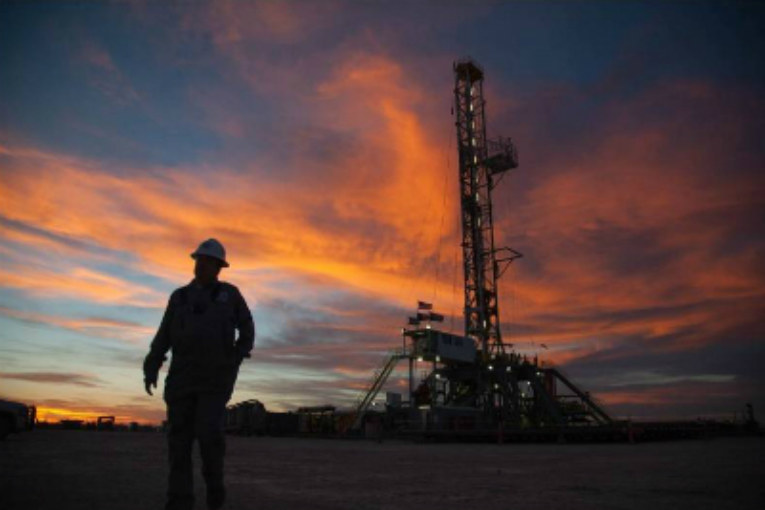
CALGARY — A key indicator of future oil and gas drilling activity in Western Canada is sliding lower as the industry deals with a lack of pipeline capacity, Alberta oil production curtailments and difficulty accessing capital markets.
Sales of Crown drilling rights — needed to allow energy exploration on land where mineral rights are held by the province — have fallen off dramatically in B.C., Alberta and Saskatchewan this year.
“When drilling rights are going well, it tends to mean somebody has found either a good reservoir or a good way to produce a known reservoir and so you get a lot of excitement,” said Richard Masson, an executive fellow with the School of Public Policy at the University of Calgary.
“This says to me, there’s no excitement at all right now. People are doing little bits of infill land buying but there’s nothing that looks like a very prospective play that would excite the industry and excite new capital to come in.”
In Alberta, which produces about 80 per cent of Canada’s oil and about 70 per cent of its natural gas, twice monthly auctions are on track for a record low with two sales left to go in 2019. Through 11 months, the province has raised $100 million by selling rights on 616,000 hectares.
The current low mark was set in 2016, when $137 million was paid for the rights to drill on 937,000 hectares, the lowest since the auction system was adopted in 1977.
The high was in 2011, when a bidding frenzy for lands for the Duvernay underground oil-bearing formation resulted in $3.5 billion spent to buy rights on 4.1 million hectares.
In British Columbia, land auctions have delivered $64 million so far this year, down from $173 million last year but ahead of $18 million and $15 million in 2015 and 2016, respectively. The record high year was 2008, when $2.66 billion was spent.
In Saskatchewan, sales of drilling rights have raised about $22 million in five auctions, down from $51 million in six auctions last year. The province’s record year was also 2008, when it raised $1.1 billion.
Industry insiders say the declines are mainly due to the lack of new pipeline capacity to allow more oil and gas production, and the resulting loss of confidence by investors that has starved the sector of debt and equity funding. Production limits in Alberta imposed by the government to better align supply with pipeline capacity are another overhang on activity.
“The mood is very cautious. People are feeling very beat up,” said Grant Fagerheim, CEO of Whitecap Resources Inc., in an interview.
At Whitecap, as with many other mid-sized Calgary producers, using scarce dollars to buy land for future drilling and then spending more on the exploration required to retain the lease is way down on the priority list, he said, below maintaining a dividend, reducing debt and buying back shares.
“Companies just don’t have budget to acquire new lands. Nobody is exploring for new plays or new ideas, or very few people are,” said Brad Hayes, a geologist and president of Petrel Robertson Consulting in Calgary.
Drilling rights auction prices fell sharply after global oil prices bottomed out in 2016, which convinced some bargain hunters to nominate land and make bids in hopes there would be a bounce back, he said. But conditions haven’t improved.
The trend to lower interest in drilling rights auctions is welcomed by environmentalists like Keith Stewart of Greenpeace Canada, who said in an email it is a sign that the “era of ever-growing demand for oil” is over.
In B.C., much of the prime land has been snapped up by producers, leaving less to be nominated for auction, said a spokesman for the Ministry of Energy, Mines and Petroleum Resources who asked not to be identified. He said some land is not available for development because of government processes around caribou recovery and land and environment planning assessments in northeastern B.C.
The Canadian Association of Oilwell Drilling Contractors recently predicted just nine more wells will be drilled in Canada in 2020 compared with this year, taking the total number to 4,905, less than half the 11,226 wells drilled in 2014.
Meanwhile, the S&P/TSX Capped Energy Index, which tracks share values of major Canadian oil and gas producers, has fallen by about 15 per cent over the past year, reflecting investor distaste for the sector.
But Whitecap’s Fagerheim says there’s hope for the industry if Canada can get pipelines built, a task he says will require concerted effort from everyone involved to educate the rest of Canada on the virtues of the oilpatch.
“I think it’s as simple as that. Make commitments, live by those commitments. Remove those delays and the regulatory processes that inhibit us from getting our products to market.
“And I think we can get the enthusiasm back.”
This report by The Canadian Press was first published on Nov. 24, 2019.
Companies mentioned in this article: (TSX:WCP)
Share This:
You can read more of the news on source



